Regarding steel die engravings.
As Used in the Printing Industry
The engravings in the pictures are acid etched in high grade steel, often known tool steel quality.
These engravings are all half inch thick and were highly polished on the top surface only. Some leeway was always allowed as to the thickness of the steel, or size regarding length or width; but mainly the steel was half an inch thick.
The steel was coated with wax and then the image was scratched on through the wax and then the steel was etched out with acid.
You will note that the depth of the image is only few thousands of an inch, and this was because that was all that was necessary.
This plate was placed and locked up in a highly specialized printing press, actually an engraving press, that had immense strength so that an impression could be obtained.
The entire surface of any plate was then inked with a specialty engraving quality of ink that had as one of it’s properties, that it was a greasy ink. The ink was impressed into the sunken surfaces of the plate and then custom rollers and or wiping paper was drawn over the entire surface of the plate, leaving ink only in the etched cavities in the plate.
The press operator then inserted a sheet of paper or card stock into the press and the press cycled to put very heavy impression on the back of the paper, thus forcing the ink onto the paper. The ink was of course then on the surface of the paper and when dry could be easily felt and seen. And that then allowed the type to show on the paper. This was commonly called just engraving. There is another type of engraving and that is copperplate engraving, but that was all carved out by hand by artists using what were called graving tools. Please note this was all done freehand, whereas steel die engraving was done in the wax by pantograph machines that used a matrix as a pattern. The matrix was itself etched out in acid and was almost always made employing a photograph as the very first matrix.
History
So, you can see that this was a slow and very expensive process and these steel dies are rare a hen’s teeth.
This was a slow and tedious and really expensive way to print and was reserved for top quality printing. This method of printing is also called Intaglio and is the way some postage and pretty much all paper money is printed.
All of the dies in the photographs date from the late 20s and on into the 1930s with a very few being dated the 1940s. One or two might date from the 1950s. All of these engravings were made in New York City which was a center for this type of steel engraving for the printing industry in North America. These steel die engravings produced the very highest quality printing leaving a raised ink impression on the paper. Some of the dies are wrapped in a copy of the image that they printed. We have not opened them, but they are undoubtedly in pristine condition.
Many of these steel die engravings were used by government and private businesses in rural Saskatchewan. The dies can transport us back in time to reveal the type of letterhead on documents used by government offices and business in the early part of the last century. Many of the dies are from the city of Regina as well, and refer to businesses, buildings, addresses and people that have long since disappeared from the prairie landscape. The steel die engravings are truly one-of-a-kind antique collectors items.
FOR SALE: Steel Die Engravings
The antique steel die engraving in the picture dates from the 1920s and 1930s and was used in the letterpress printing industry to produce the very highest quality printing by leaving a raised ink impression on the paper. The images and text on these tool-quality steel blocks were etched by acid.
These engravings are generally half-inch thick and highly polished on the top surface only. A powerful printing press was needed to ensure that the image on the steel dies could be thoroughly and cleanly impressed onto paper.
We have advertised these steel die engravings on a number of sites including Etsy. The full range of steel die for sale can be found below on this site. When find the particular die you want, send us a message along with with the file name to arrange for purchase and shipping.
HISTORY
Because using steel die engravings was a slow and complex process, it was also the most expensive way to print and was reserved for the best quality printing. As a result, these steel dies are as rare as hen’s teeth.
These engravings were used for decades by government and private businesses in rural Saskatchewan. The dies can transport us back in time to reveal the type of letterhead on documents used by government offices and business in the early part of the last century. Many of the dies are from the city of Regina as well, and refer to businesses, buildings, addresses and people that have long since disappeared from the prairie landscape. The steel die engravings are truly one-of-a-kind antique collectors items.
PRICES 100.00 each.
The larger plates and those with line drawings are more expensive. Contact us for information
CONDITION
All of the antique steel dies are in very good condition considering their age. Light rust or stains can be easily removed with a metal cleaning solution. Some of the steel dies in the photos appear to have distorted colour, but this is because the photographs were taken in poor light. During the photo editing process, some of the photos attained distorted colours.
IMPORTANT NOTE As with all letterpress type and etchings, these steel die engravings are reverse images. After being inked and printed on paper, the reverse image dies will print onto paper a “right reading” image. For ease of viewing the photographs, I have flipped all the photo images in the galleries below to “right reading” images. The steel die engraving that you will buy is a reverse-reading image.
LOCATIONS
The engravings involve individuals, business, or government in the following cities, towns, and villages in Canada and the USA:
|
|
NOTE: As with all letterpress type and etchings, these steel die engravings are reverse images. After being inked and printed on paper, the reverse image dies will print onto paper a “right reading” image. For ease of viewing, I flipped all the images in these galleries to “right reading” images.
Three Galleries
We have four galleys of steel die engravings. Each galley is presented below in a separate image gallery. Each of Gallery 1, Gallery 2, Gallery 3 and Gallery 4 below consists of two parts:
a) Complete Gallery Image
b) Individual Steel Dies
Gallery #1
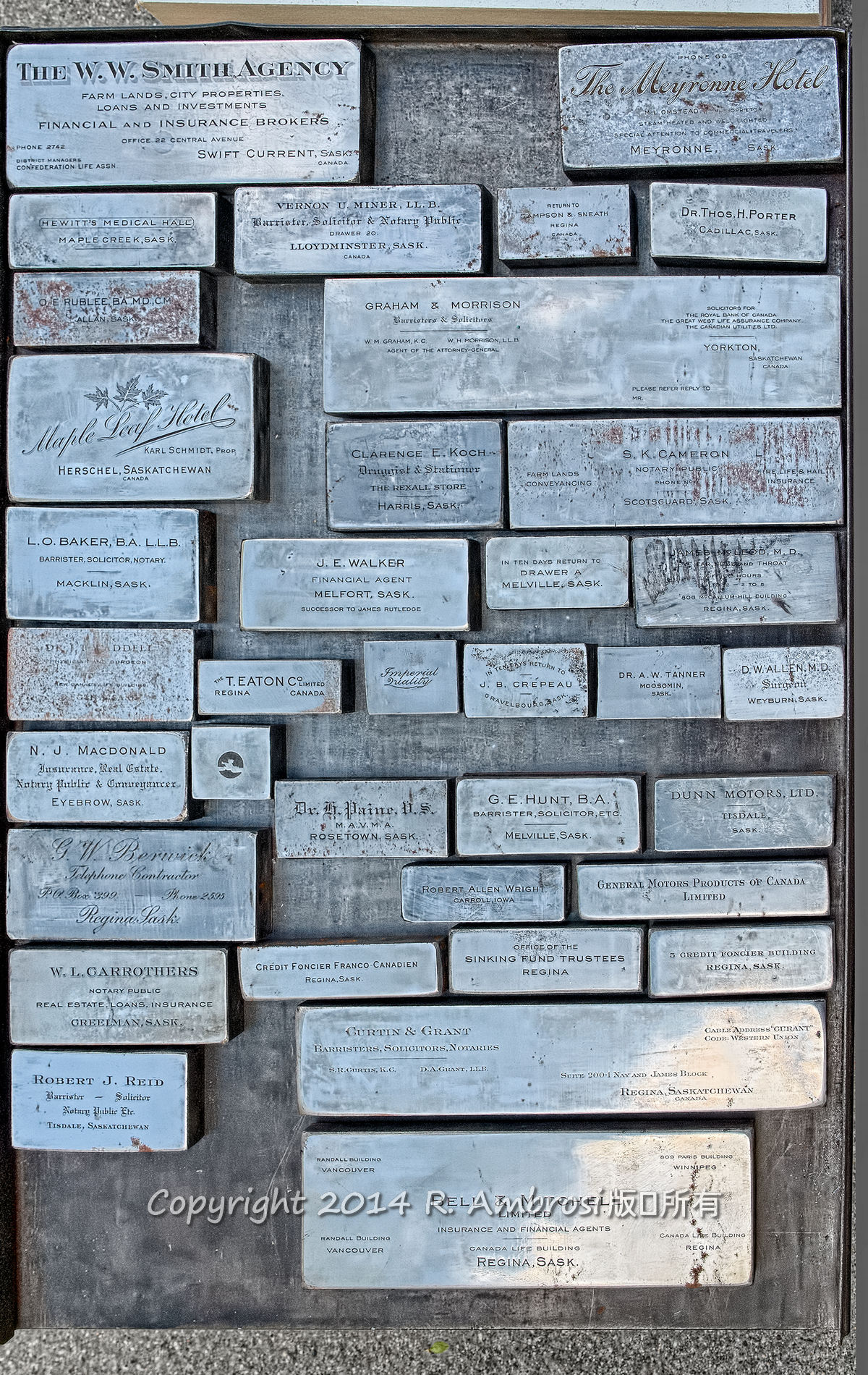
The following images are images of the individual steel dies shown in the Galley #1 tray above.
The W.W. Smith Agency.
Farm Lands, City Properties, Loans and Investments.
Financial and Insurance Brokers.
Phone 2743
Swift Current, Sask
The Meyronne Hotel.
Phone 68
M.L. Omstead Proprietor
Steam Head and Well Lighted.
Special attention to commercial travelers.
Meyronne, Sask.
Hewitt’s Medical Hall
Maple Creek, Sask
Vernon U. Miner, LL.B
Barrister, Solicitor & Notary Public.
Drawer 20
Lloydminster, Sask.
Canada
Return to Sampson & Sneath. Regina, Canada
Dr. Thos. H. Porter. Cadillac, Sask.
O.E. Rublee, BA. M.D, C.M.
Allan, Sask
Graham & Morrison
Barristers and Solicitors
WM Graham, K.C. W.H. Morrison, LLB
Agent of the Attorney-General.
Solicitors for The Royal Bank of Canada, The Great West Life Assurance Company, The Canadian Utilities Ltd.
Yorkton, Saskatchewan, Canada
Maple Leaf Hotel
Karl Schmidt, Prop
Herschel, Saskatchewan
Canada
Clarence E. Koch
Druggist & Stationer
The Rexall Store
Harris, Sask.
S.K. Cameron
Notary Public
Phone No.
Farm Lands Conveyancing.
Fire, Life & Hail Insurance.
Scotsguard, Sask.
L.O. Baker, B.A. L.L.B.
Barrister, Solicitor, Notary.
Macklin, Sask.
J.E. Walker
Financial Agent
Melfort, Sask
Successor to James Rutledge.
In Ten Days Return to Drawer A.
Melville, Sask.
James McLeod, M.D.
Eye, Ear, Nose and Throat
Office Hours 9-12, 2-5
806 McCallum-Hill Building. Regina, Sask.
Dr. J.T. McAddell
Physician and Surgeon.
New Canada Life Building.
The T. Eaton Co. Limited
Regina, Canada
Imperial Quality
In Ten Days Return to J.B. Crepeau.
Gravelbourg, Sask
Dr. A.W. Tanner
Moosomin, Sask.
D.W. Allen, M.D.
Surgeon
Weyburn, Sask.
N.J. MacDonald
Insurance, Real Estate, Notary Public & Conveyancer.
Eyebrow, Sask.
Unknown symbol
Dr. H. Paine, H.S.
M.A.V.M.A.
Rosetown, Sask.
G.E. Hunt, B.A.
Barrister, Solicitor, Etc
Melville, Sask
Dunn Motors, Ltd,
Tisdale, Sask.
G.W. Berwick
Telephone Contractor
P.O. Box 388 Phone 2595
Regina, Sask.
Robert Allen Wright
Carroll, Iowa
General Motors Products of Canada Limited.
W.L. Carrothers
Notary Public
Real Estate, Loans, Insurance.
Creelman, Sask.
Credit Foncier Franco-Canadien.
Regina, Sask.
Office of the Sinking Fund Trustees.
Regina
5 Credit Foncier Building
Regina, Sask.
Robert J. Reid
Barrister – Solicitor
Notary Public Etc.
c
Curtin & Grant
Barristers, Solicitors, Notaries.
S.R. Curtin K.C D.A. Grant, LL.B.
Cable Address: “Curant”
Code: Western Union
Suite 200-1 Nay and James Block
Regina, Saskatchewan,
Canada
Bell & Mitchell Limited
Insurance and Financial Agents.
Randall Building
Vancouver
809 Paris Building
Winnipeg
Canada Life Building
Regina, Sask.
Gallery #2
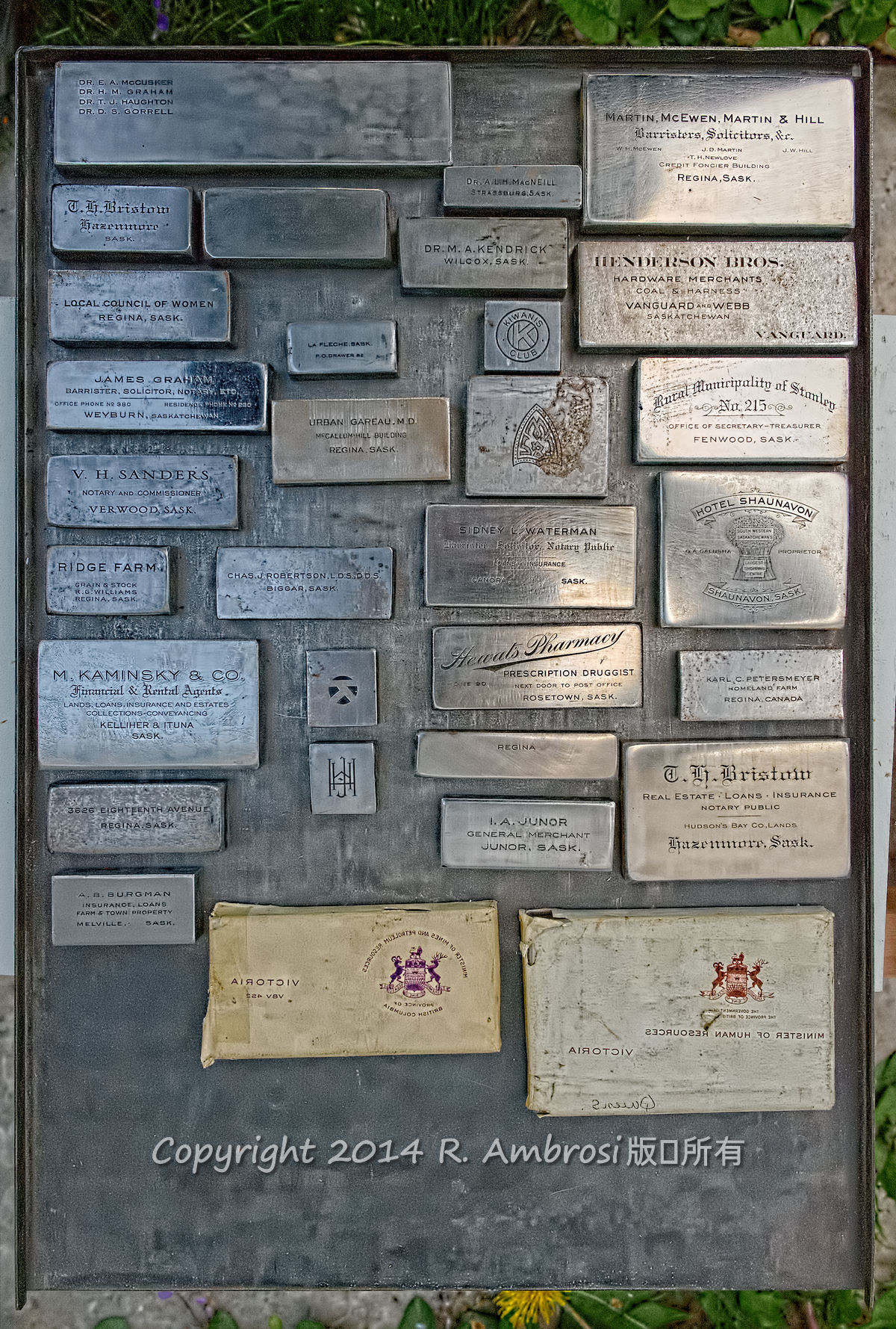
The following images are images of the individual steel dies shown in the Galley #2 tray above.
Dr. E.A. McCusker
Dr. H.M. Graham
Dr. T.J. Haughton
Dr. D.S. Gorrell
Dr. A. L.H. MacNeill
Strassburg, Sask
Martin, McEwen, Martin & Hill
Barristers, Solicitors &c
W.H. McEwen, J.D. Martin, J.W. Hill
T.H. Newlove
Credit Foncier Building
Regina, Sask.
T. H. Bristow
Hazenmore. Sask
Image unclear. New image coming soon.
Dr. A.L.H MacNeill
Strassburg, Sask
Dr. M.A. Kendrick
Wilcox, Sask.
Henderson Bros
Hardware Merchants
Coal & Harness
Vanguard and Webb
Saskatchewan
Vanguard.
Local Council of Women
Regina, Sask.
La Fleche, Sask
P.O. Drawer 82
Kiwanis Club
Henderson Bros
Hardware Merchants
Coal & Harness
Vanguard and Webb
Saskatchewan
Vanguard.
James Graham
Barrister, Solicitor, Notary, Etc.
Office Phone No. 380. Resident Phone 230
Weyburn, Saskatchewan
Unknown emblem
Urban Gareau. M.D.
McCallum-Hill Building
Regina, Sask.
Rural Municipality of Stanley.
No. 215
Office of Secretary-Treasurer
Fenwood, Sask.
V.H. Sanders
Notary and Commissioner
Verwood, Sask.
Ridge Farm
Grain & Stock
R.G. Williams
Regina, Sask.
Chas. J. Robertson, L.D.S. D.D.S.
Biggar, Sask.
Sidney L. Waterman
Barrister, Solicitor, Notary Public
Loans – Insurance
Canora, Sask.
Hotel Shaunavon
G.A. Galusha Proprietor
South Western Saskatchewan’s Largest Shopping Center.
Shaunavon, Sask
M. Kaminsky & Co.
Financial & Rental Agents.
Lands, Loans, Insurance and Estates Collections – Conveyancing.
Kelliher & Ituna, Sask.
Kiwanis emblem.
Hewat’s Pharmacy
Prescription Druggist
Phone 90
Next Door to Post Office
Rosetown, Sask.
Karl C. Petersmeyer
Homeland Farm
Regina, Canada
3626 Eighteenth Avenue
Regina, Sask.
Unidentified Emblem.
Regina
G.H. Bristow
Real Estate – Loans – Insurance.
Notary Public
Hudson’s Bay Co. Lands
Hazenmore, Sask.
I.A. Junor
General Merchant
Junor, Sask.
A.B. Burgman
Insurance, Loans
Farm & Town Property
Melville, Sask.
Minister of Mines and Petroleum Resources. Province of British Columbia
Victoria, V8V 4S2
The Government of the Province of British Columbia.
Minister of Human Resources.
Victoria
Queens.
Gallery #3
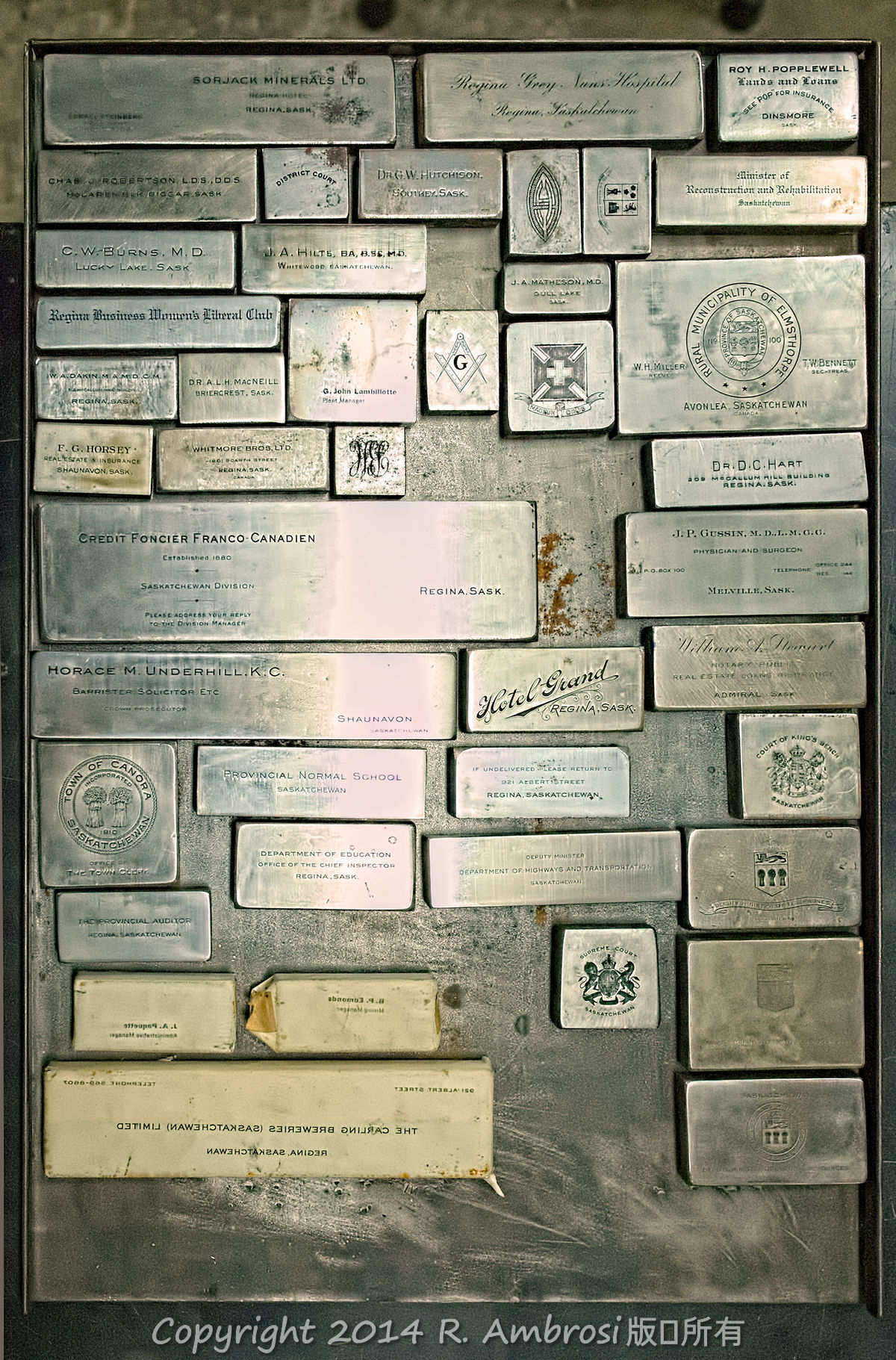
The following images are images of the individual steel dies shown in the Galley #3 tray above.
Sorjack Minerals Ltd.
Sorrell Steinberg
Phone 6707
Regina Hotel
Regina, Sask
Regina Grey Nuns Hospital
Regina, Saskatchewan
Roy H. Popplewell
Lands and Loans
See “Pop” for Insurance.
Dinsmore, Sask
Chas J. Robertson L.D.S. D.DS.
McLaren Elk Biggar Sask.
District Court
Dr. G.W. Hutchison.
Southey, Sask.
unknown emblem
Coat of Arms – Unknown
Minister of Reconstruction and Rehabilitation.
Saskatchewan.
C.W. Burns, M.D.
Lucky Lake, Sask.
J.A. Hilts, BA, B.SC, M.D.
Whitewood, Saskatchewan.
J.A. Matheson, M.D.
Gull Lake, Sask.
Regina Business Women’s Liberal Club
G. John Lambillotte
Plant Manager
unknown emblem
Magnum Opus
Rural Municipality of Elmsthorpe.
Province of Saskatchewan.
W.H. Miller, Reeve
T.W. Bennett, Sec-Treas
Avonlea, Saskatchewan
Canada.
W.A. Dakin M.A. M.D. C.M
McCallum Hill Building
Regina, Sask.
Dr. A.L.H. MacNeill
Briercrest, Sask.
F.G. Horsey
Real Estate & Insurance
Shaunavon, Sask.
Whitmore Bros, LTD.
1861 Scarth Street
Regina, Sask.
Canada
Unknown emblem
Dr. D.C. Hart
209 McCallum Hill Building
Regina, Sask.
Credit Foncier Franco-Canadien.
Established 1880
Saskatchewan Division
Please address your reply to the Division Manager.
Regina, Sask.
J.P. Gussin, M.D., L.M. C.C.
Physician and Surgeon
P.O. Box 100
Telephone: Office 244
Res. 144
Melville, Sask.
Horace M. Underhill, K.C.
Barrister, Solicitor, Etc.
Crown Prosecutor
Shaunavon, Saskatchewan
Hotel Grand
Regina, Sask.
William A ——-
Notary Public
Real Estate – Loans – Insurance
Admiral, Sask.
Town of Canora Saskatchewan.
Incorporated 1910
Office of the Town Clerk
Provincial Normal School
Saskatchewan
If undelivered please return to 921 Albert Street
Regina, Saskatchewan
Court of King’s Bench
Saskatchewan
Town of Canora Saskatchewan.
Incorporated 1910
Office of the Town Clerk
Department of Education
Office of the Chief Inspector
Regina, Sask.
Deputy Minister
Department of Highways and Transportation
Saskatchewan
Saskatchewan Government – CHECK
The Provincial Auditor
Regina, Saskatchewan
J.A. Paquette
Administrative Manager.
Note: This die was wrapped after use decades ago and is in pristine condition.
B.P. Edmonds
Mining Manager
Note: This die was wrapped after use decades ago and is in pristine condition.
The Carling Breweries (Saskatchewan) Limited
Regina, Saskatchewan
921 Albert Street
Telephone 569-8607
Supreme Court
Saskatchewan
Saskatchewan Government (check)
Saskatchewan Government (check)
Gallery #4
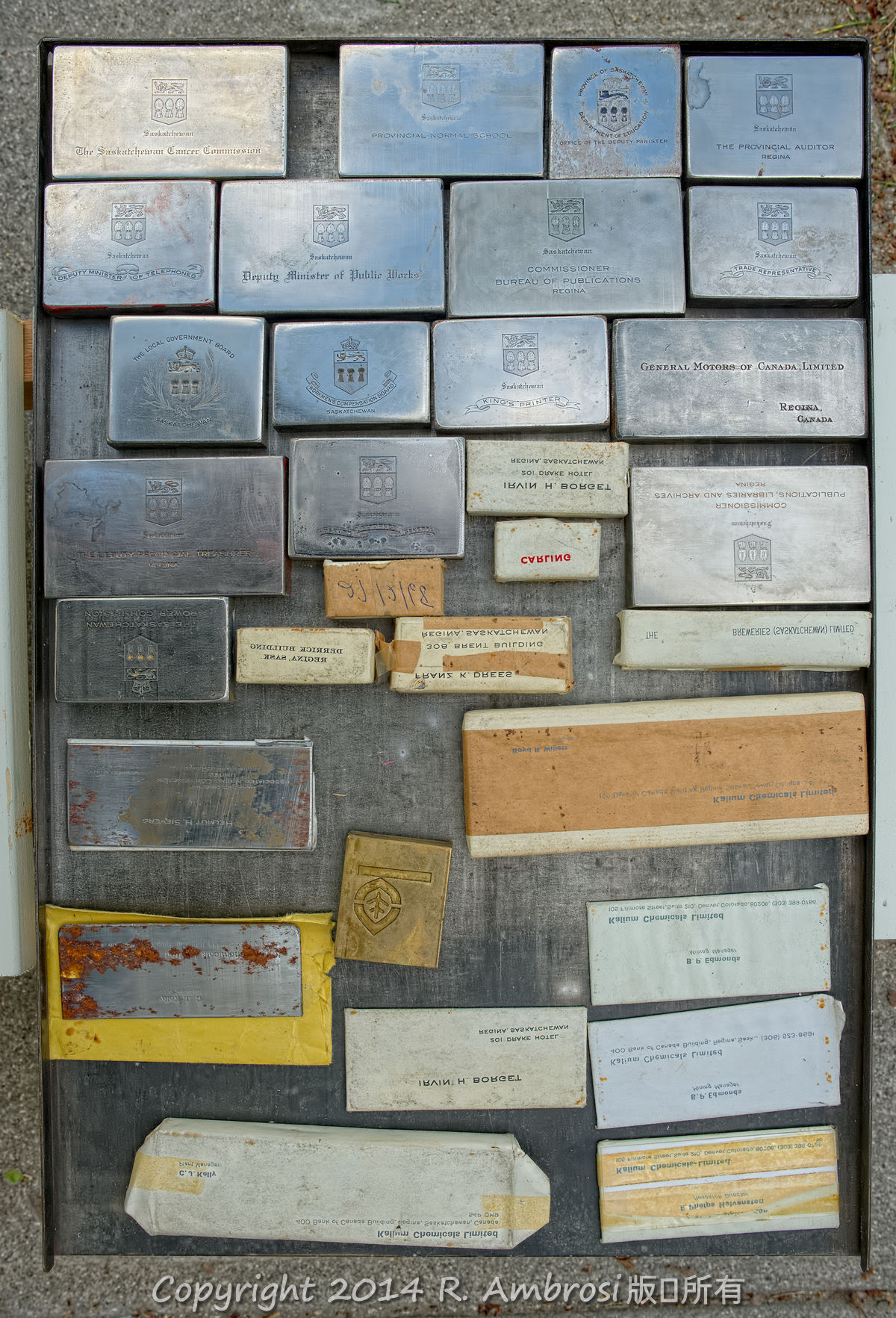
The following images are images of the individual steel dies shown in the Galley #4 tray above.
Saskatchewan
Saskatchewan Cancer Commission
Saskatchewan.
Provincial Normal School
Province of Saskatchewan
Department of Education.
Office of the Deputy Minister
Saskatchewan
The Provincial Auditor
Regina
Saskatchewan
Deputy Minister of Telephones
Saskatchewan.
Deputy Minister of Public Works
Saskatchewan.
Commissioner Bureau of Publications.
Regina
Saskatchewan.
Trade Representative
The Local Government Board.
Saskatchewan
Workmen’s Compensation Board.
Saskatchewan
Saskatchewan.
King’s Printer
General Motors of Canada, Limited.
Regina, Canada
Saskatchewan.
Deputy Provincial Treasurer.
Regina
Saskatchewan.
Deputy Attorney General.
Saskatchewan
Commissioner Publications, Libraries and Archives.
Regina
The Saskatchewan Power Commission.
Derrick Building.
Regina, Sask
Note: Wrapped decades ago and likely in pristine condition. Very rare.
Wrapped unknown content labelled with “2712168”
Franz K. Drees
308 Brent Building
Regina, Saskatchewan
Note: Wrapped decades ago and likely in pristine condition. Very rare.
Irvin H. Borget
201 Drake Hotel
Regina, Saskatchewan
Note: Wrapped decades ago and likely in pristine condition. Very rare.
Carling
Note: Wrapped and in pristine condition. Probably for Carling Beer company
The ___ Breweries (Saskatchewan) Limited
Note: Wrapped decades ago and likely in pristine condition. Very rare.
Kalium Chemicals Limited
400 Bank of Canada Building.
Regina, Saskatchewan
Note: Wrapped decades ago and likely in pristine condition. Very rare.
Kalium Chemicals Limited
400 Bank of Canada S4P 0M9
C.J. Kelly
Plant Manager
Note: Wrapped decades ago and likely in pristine condition. Very rare.
Unknown emblem.
Kalium Chemicals
BP Edmonds
Mining Manager
Kalium Chemicals Limited
105 Fillmore Street, Suite 210, Denver, Colorado 80206
(303) 399-0786
BP Edmonds
Mining Manager
Kalium Chemicals Limited
400 Bank of Canada Building
Regina, Sask
(306) 523-8691
Note: Wrapped decades ago and likely in pristine condition.
E. Phelps Helvenston
Research Director
Kalium Chemicals Limited
105 Fillmore Street, Suite 210, Denver, Colorado 80206
(303) 399-0786
Irvin H. Borget
201 Drake Hotel
Regina, Saskatchewan
Close Up Image Galleries
Below are two galleries showing the exact same steel die engraving. The first gallery is
Close Up Right Reading Gallery
Saskatchewan
Deputy Minister of Natural Resources.
Forests – Lands – Mines – Fisheries – Water Powers
Supreme Court
Saskatchewan
Deputy Minister of Telephones.
Saskatchewan
Court of King’s Bench
Saskatchewan
Deputy Minister
Department of Highways and Transportation
Saskatchewan
Town of Canora Saskatchewan.
Incorporated 1910
Office of the Town Clerk
Hotel Grand
Regina, Sask.
Rural Municipality of Elmsthorpe.
Province of Saskatchewan.
W.H. Miller, Reeve
T.W. Bennett, Sec-Treas
Avonlea, Saskatchewan
Canada.
Dia’s Naomh Aindrea
Saskatchewan
Commissioner Publications, Libraries and Archives.
Regina
Saskatchewan.
Deputy Provincial Treasurer.
The Local Government Board.
Saskatchewan
Provincial Normal School
Saskatchewan
Saskatchewan
Saskatchewan Cancer Commission
Close Up Reverse Reading Gallery
The above “Close Up” gallery showed the steel die engravings as “right reading” images. The gallery below shows the exact same steel die engravings as they actually are– as reverse images. I took these photos just outside the door at Ambrosi Printers on a nice spring day.
Deputy Minister of Natural Resources.
Forests – Lands – Mines – Fisheries – Water Powers
Supreme Court
Saskatchewan
Deputy Minister of Telephones.
Saskatchewan
Court of King’s Bench
Saskatchewan
Deputy Minister
Department of Highways and Transportation
Saskatchewan
Town of Canora Saskatchewan.
Incorporated 1910
Office of the Town Clerk
Hotel Grand
Regina, Sask.
Rural Municipality of Elmsthorpe.
Province of Saskatchewan.
W.H. Miller, Reeve
T.W. Bennett, Sec-Treas
Avonlea, Saskatchewan
Canada.
Dia’s Naomh Aindrea
Saskatchewan
Commissioner Publications, Libraries and Archives.
Regina
Saskatchewan.
Deputy Provincial Treasurer.
The Local Government Board.
Saskatchewan
Provincial Normal School
Saskatchewan
Saskatchewan
Saskatchewan Cancer Commission


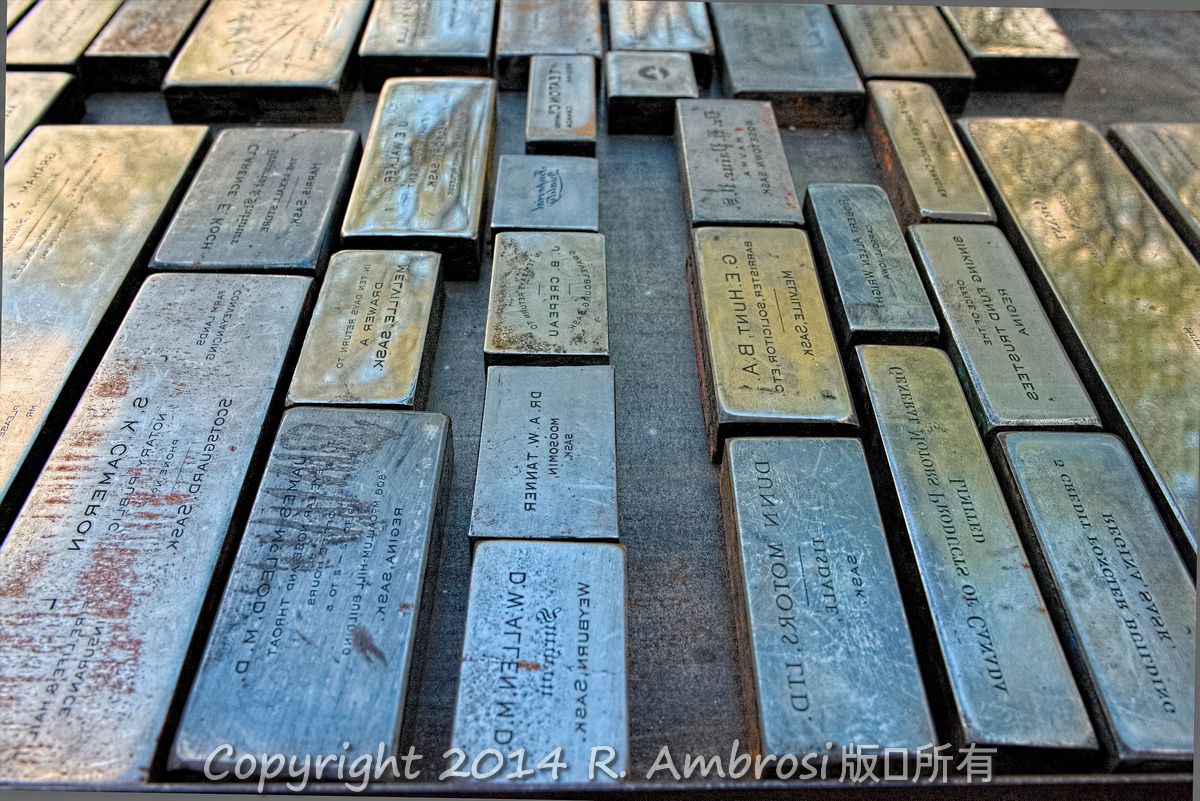
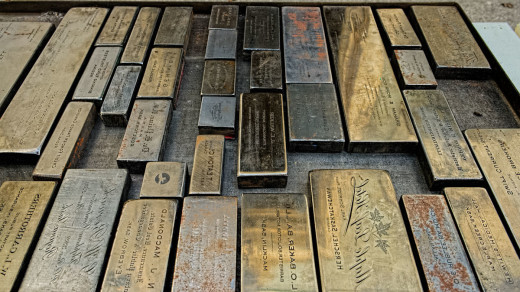
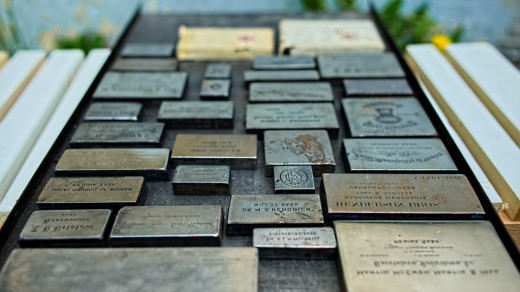
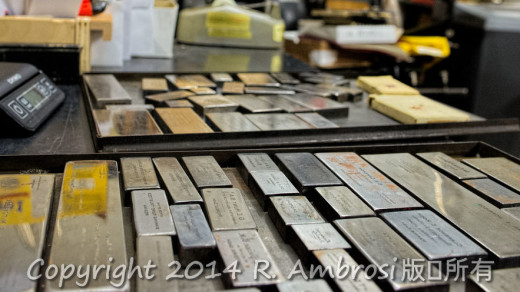
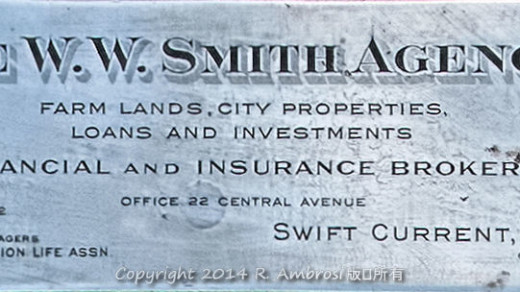
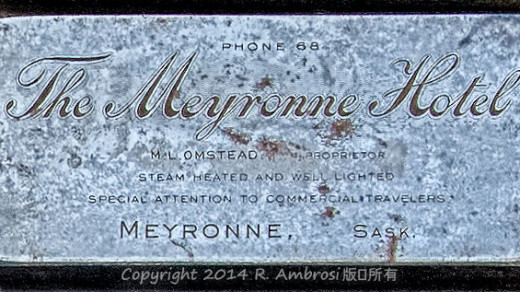
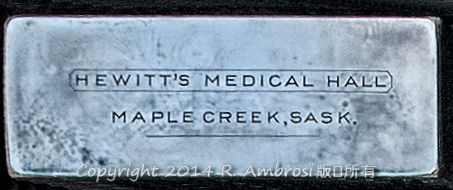
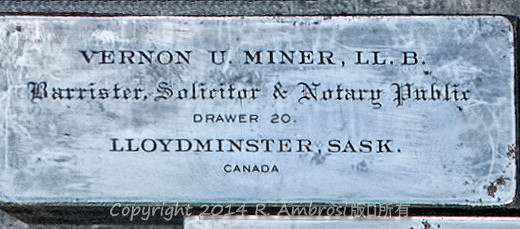
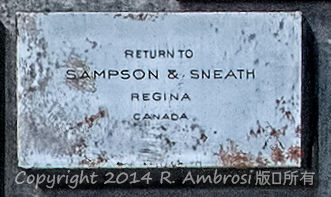

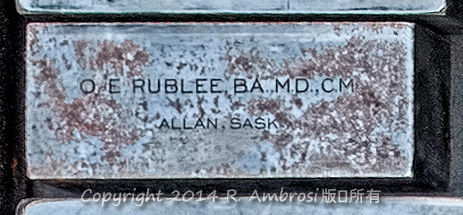
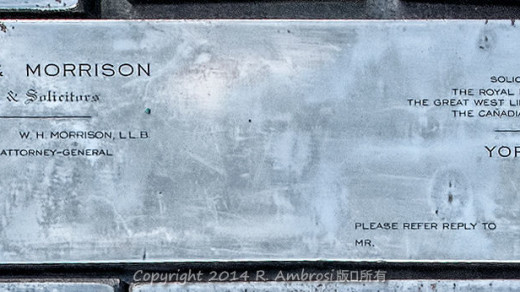
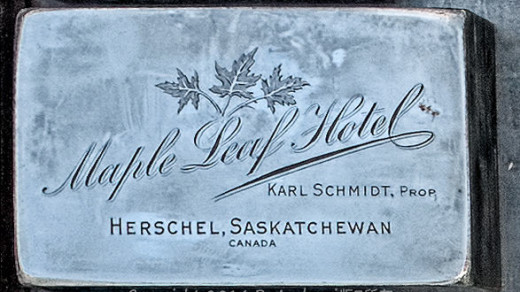
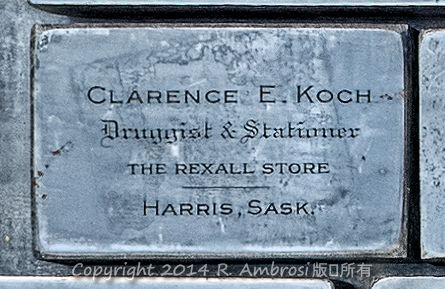
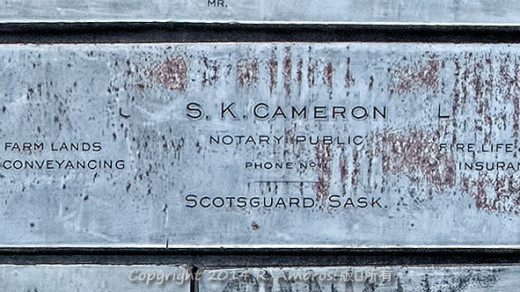
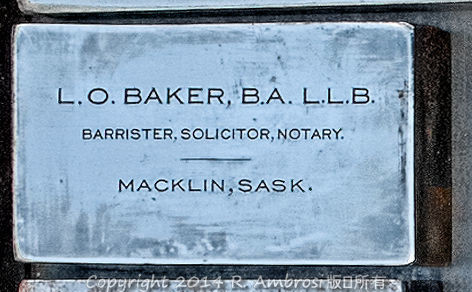
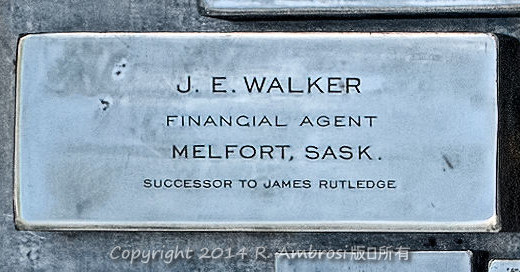
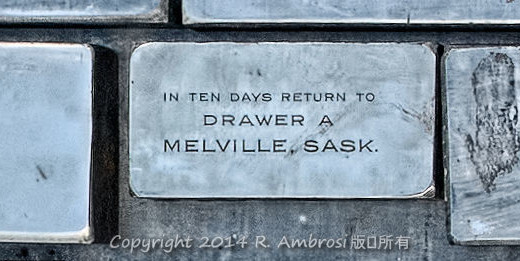
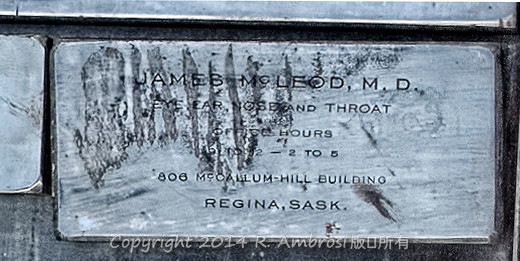
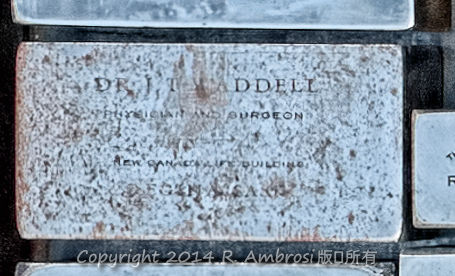
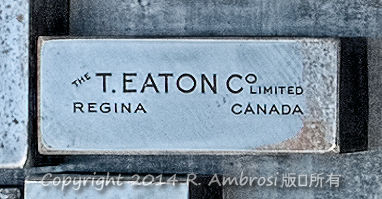
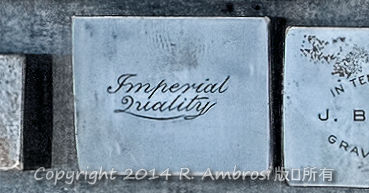
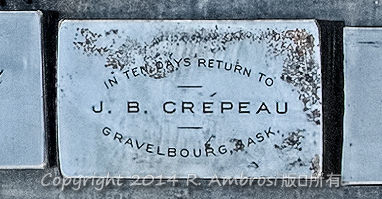
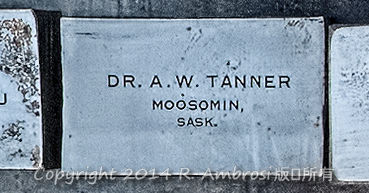
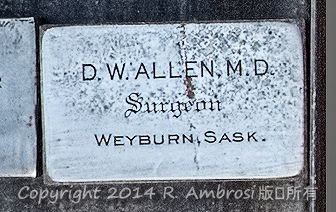
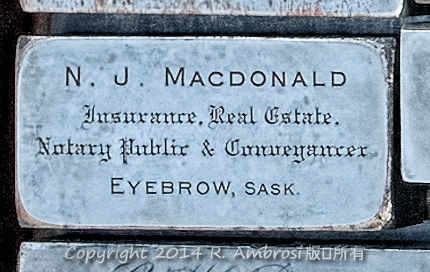
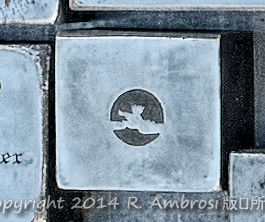
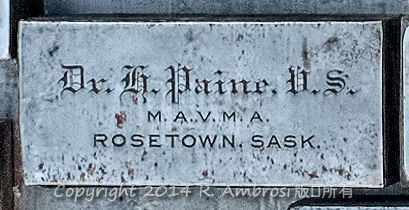
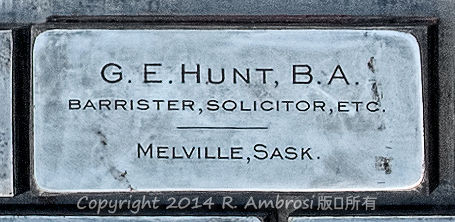
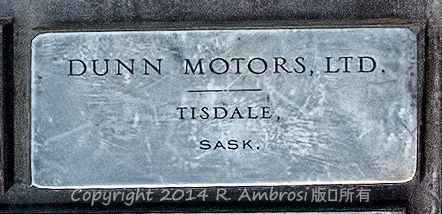
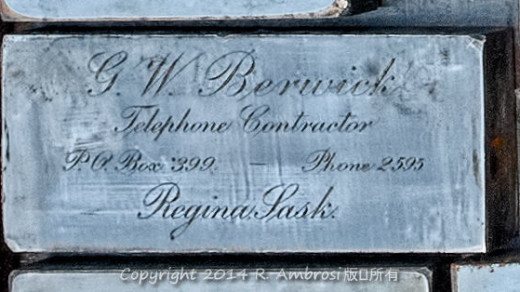
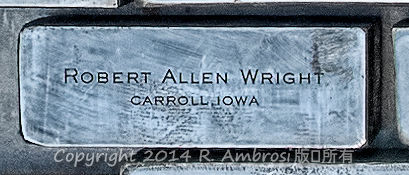
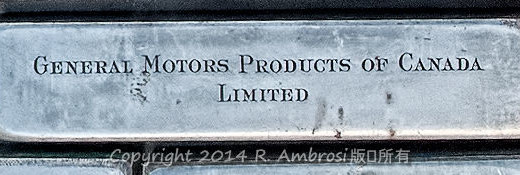
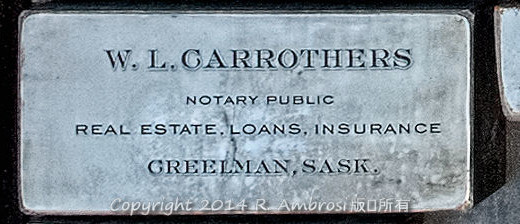
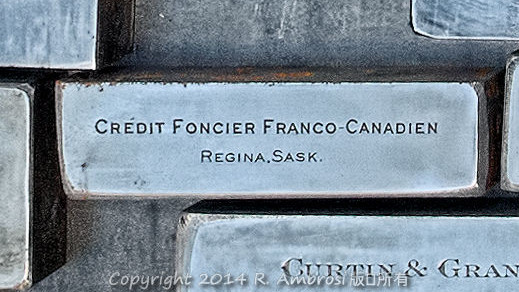
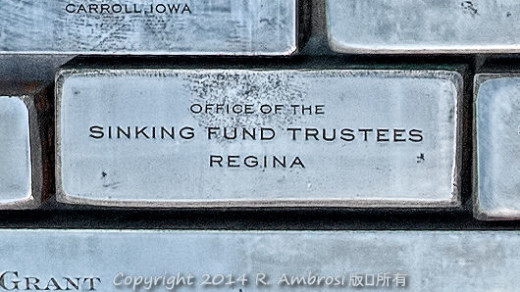
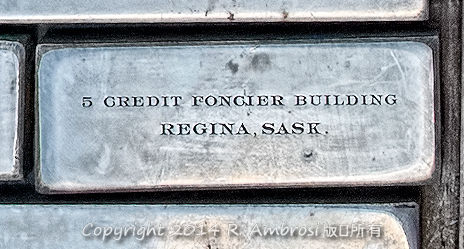
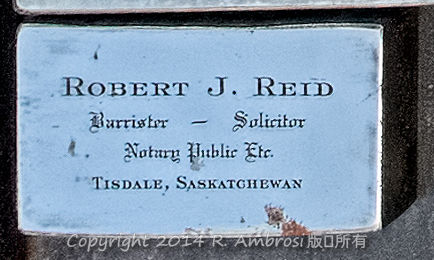
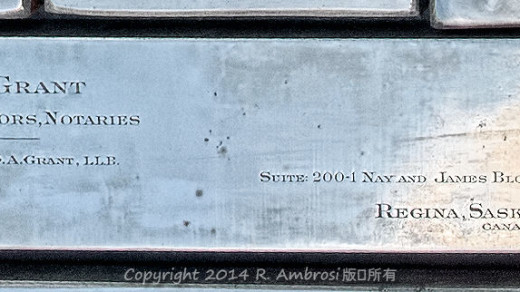
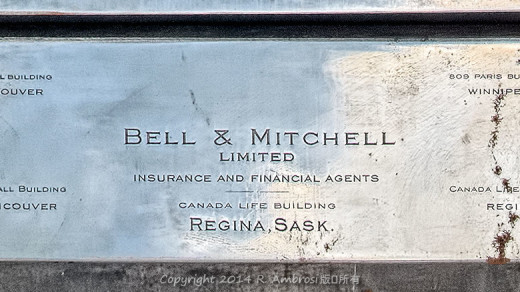
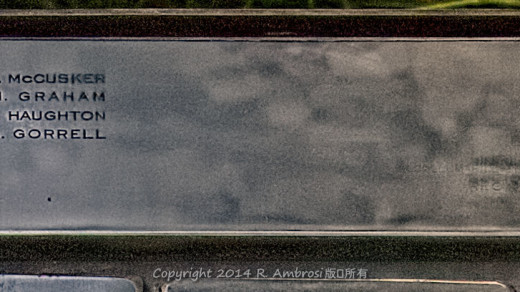
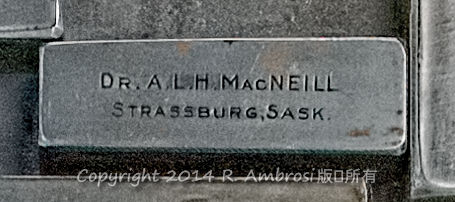
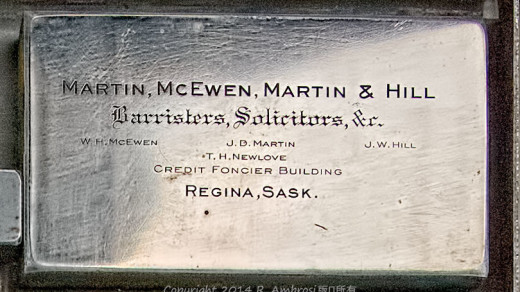
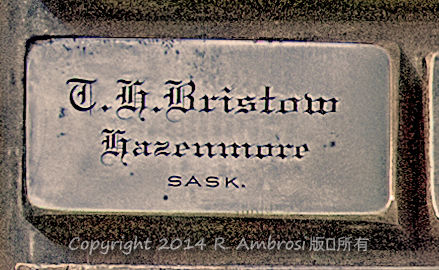
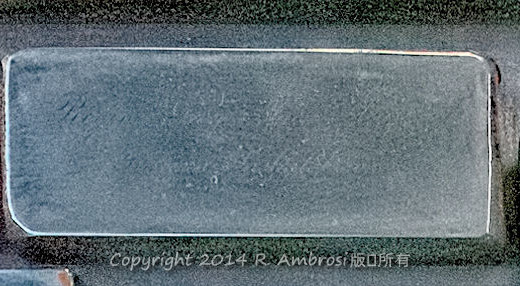
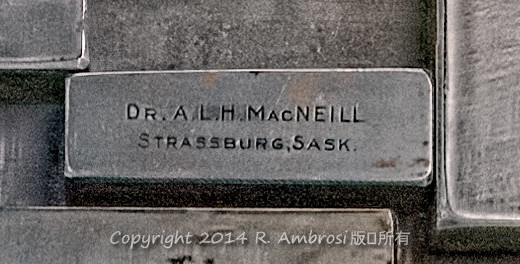
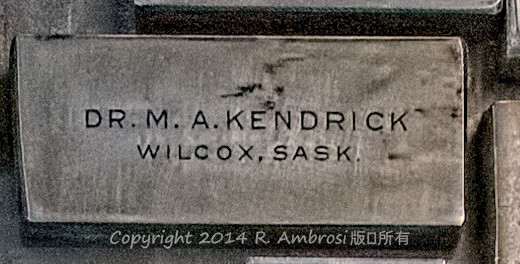
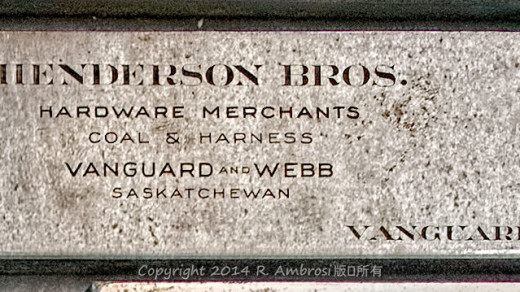
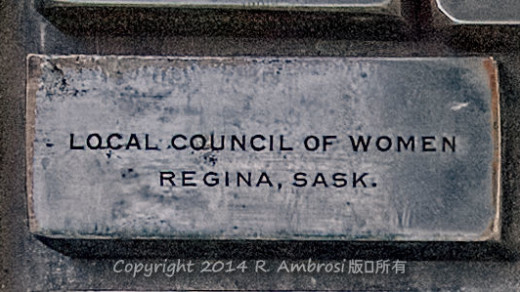
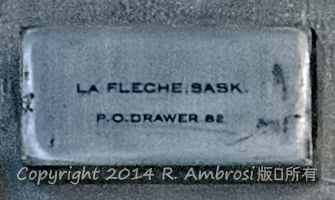

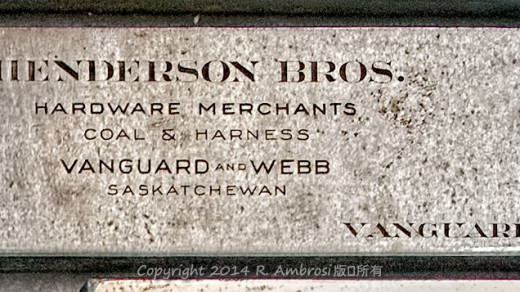
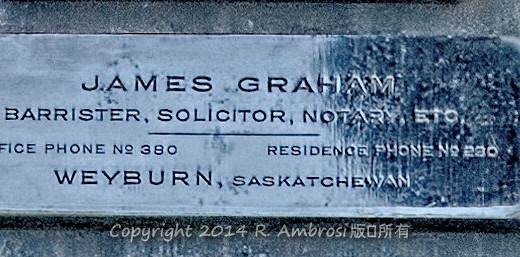
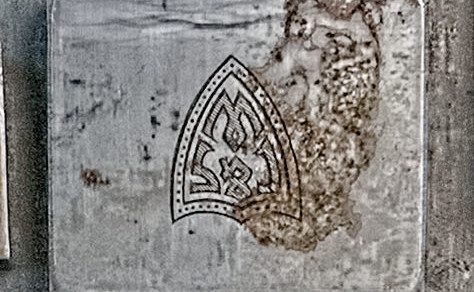
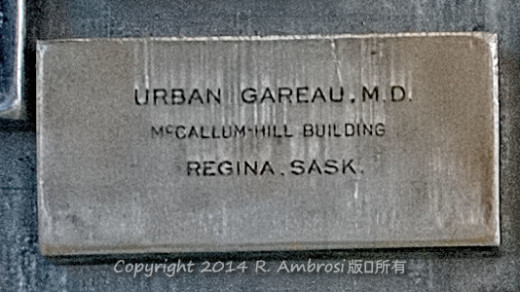
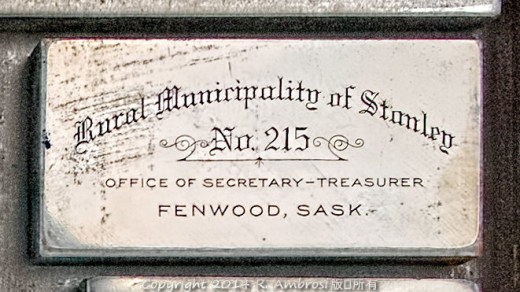
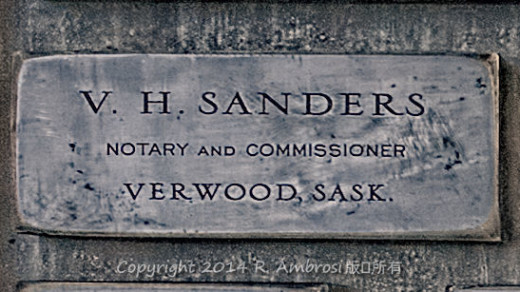

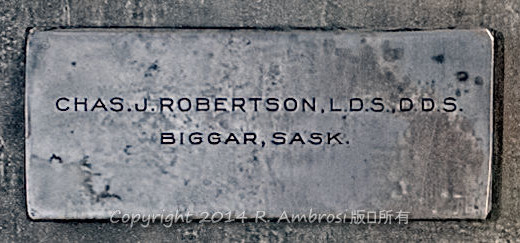
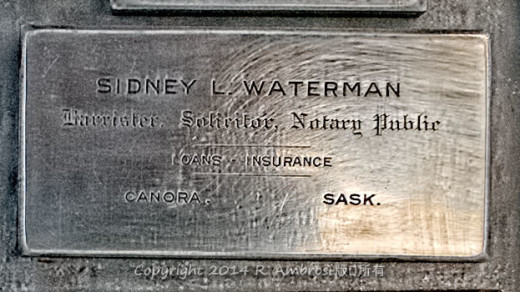
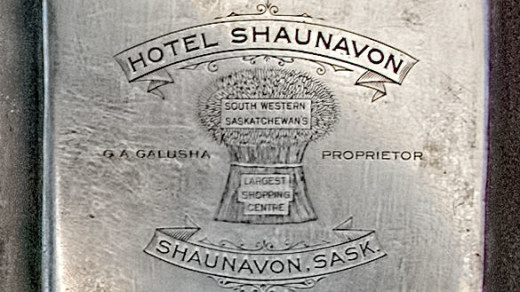
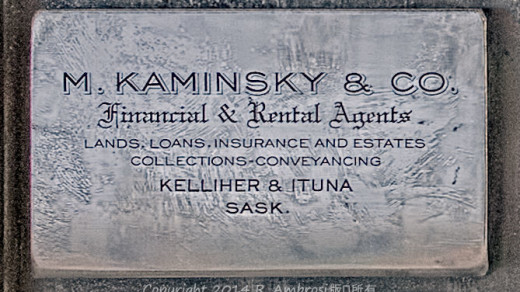
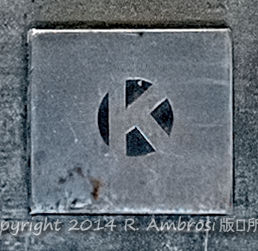
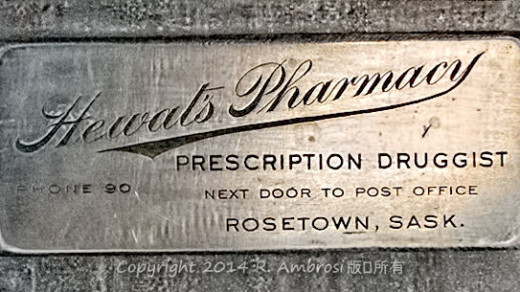

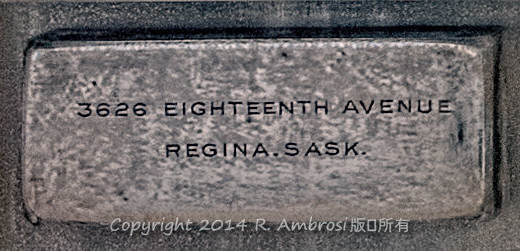
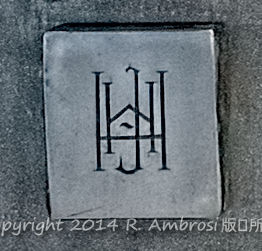
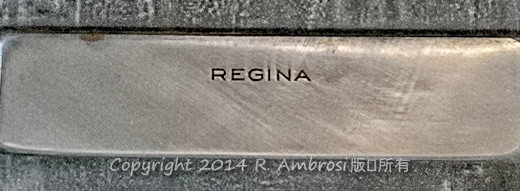
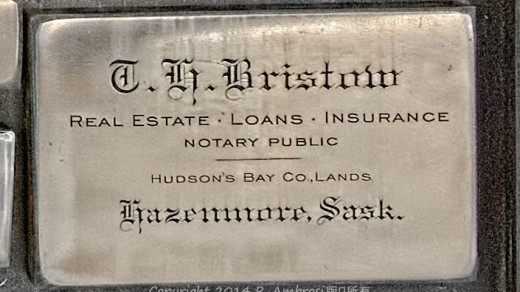
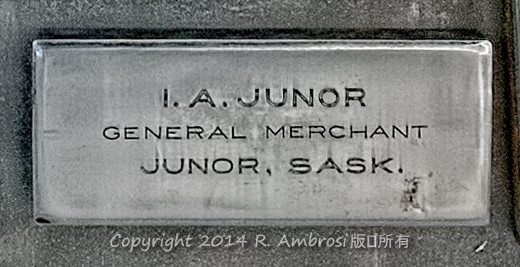
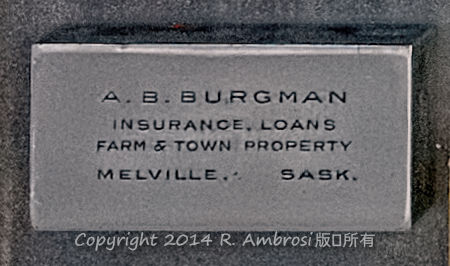
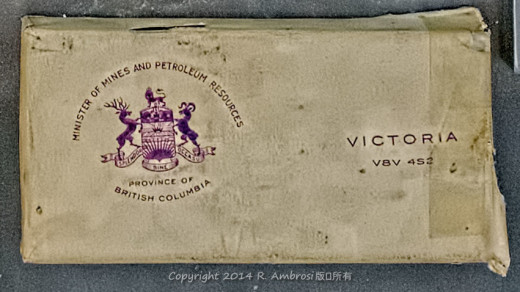
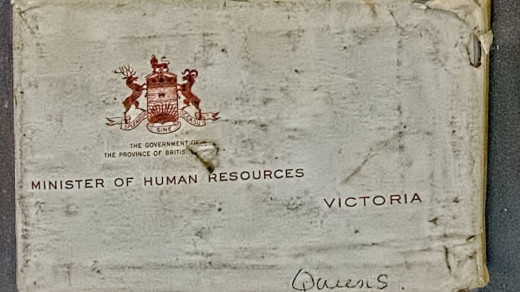
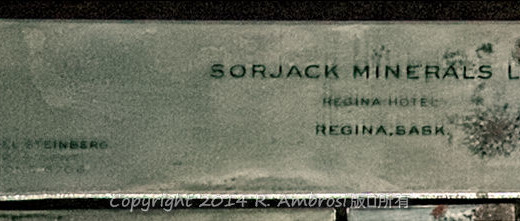
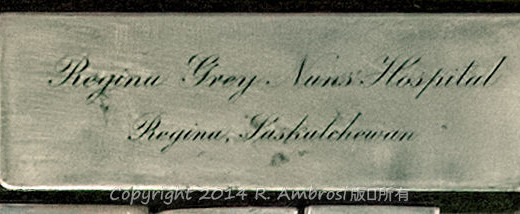
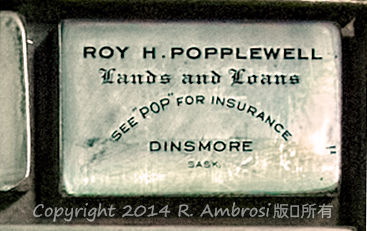

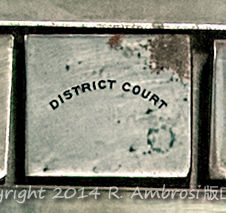
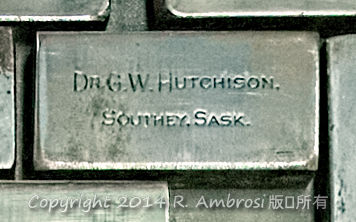
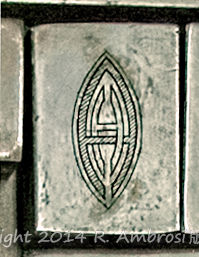
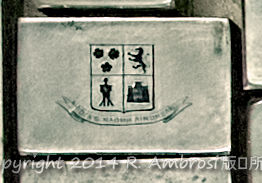
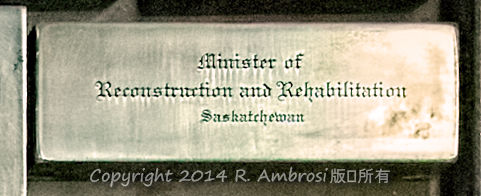
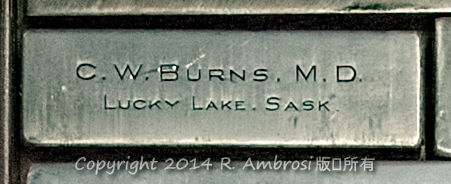
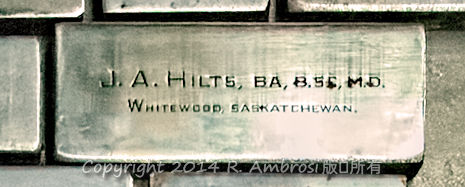
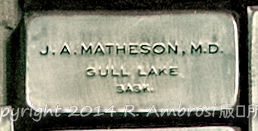

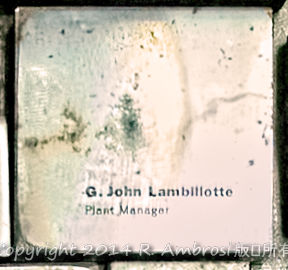
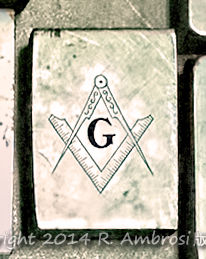
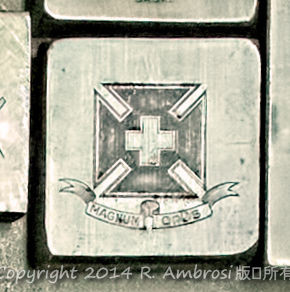
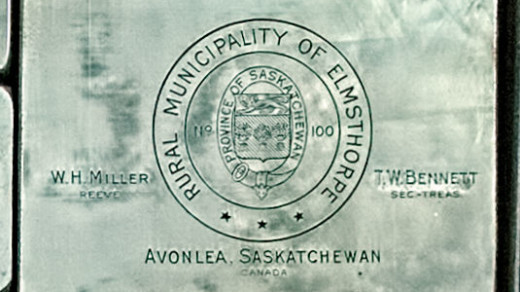
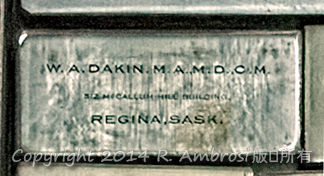
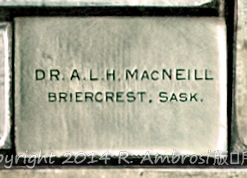
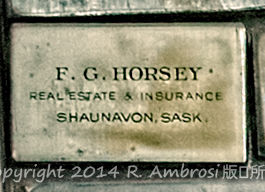
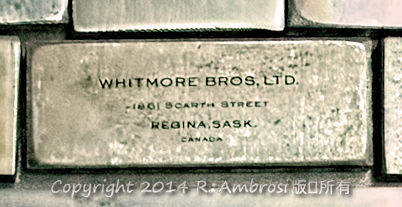
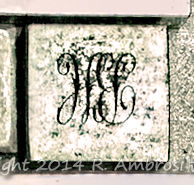
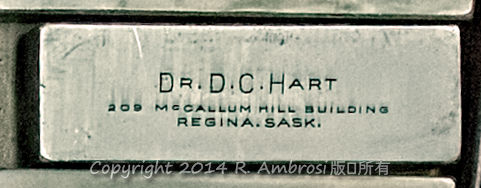
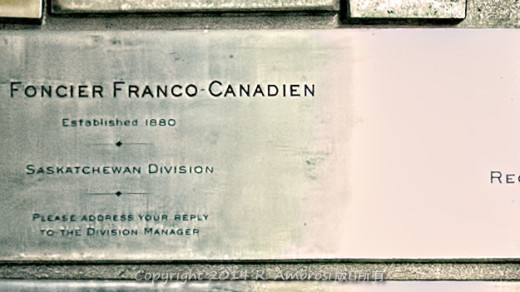
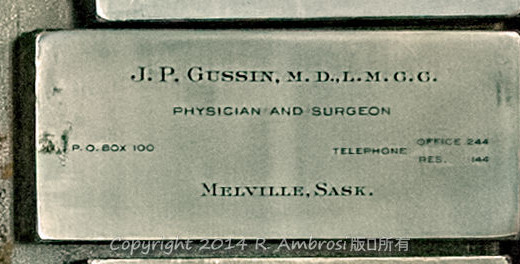
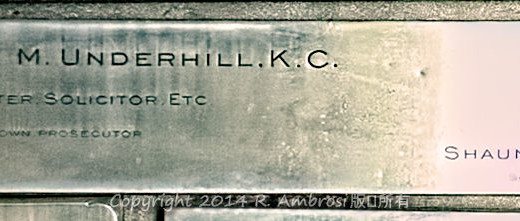
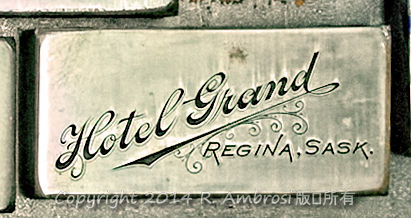
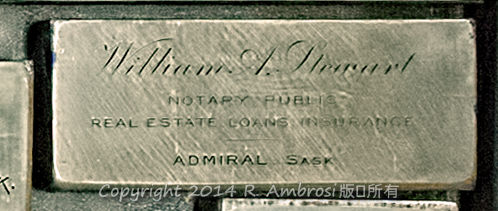
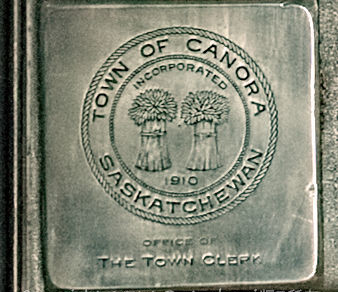
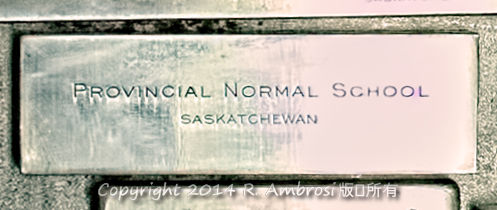
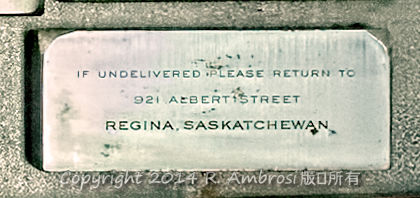
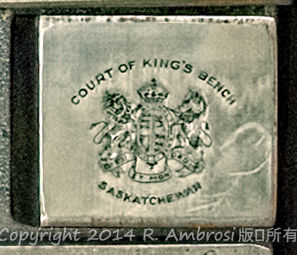
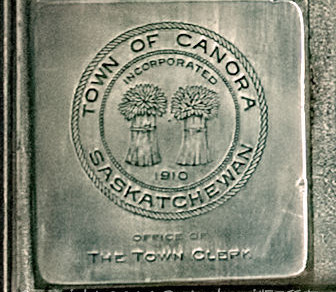
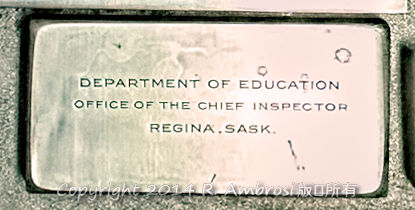
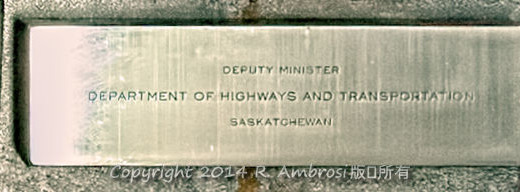
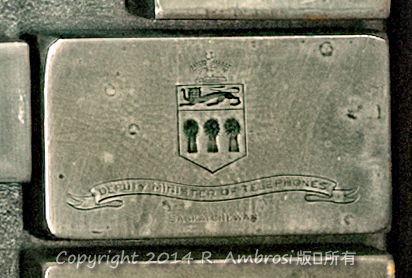

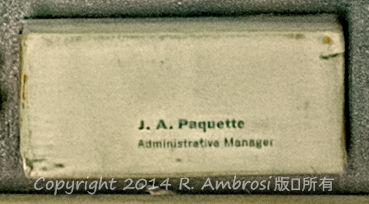
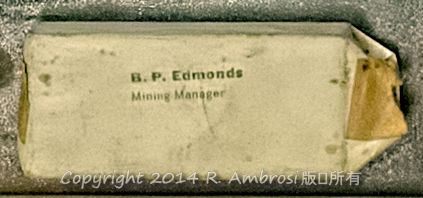
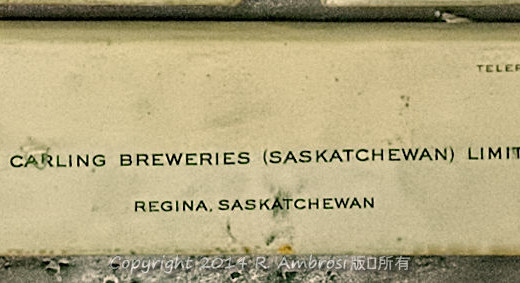
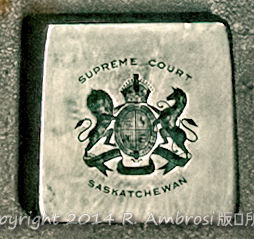
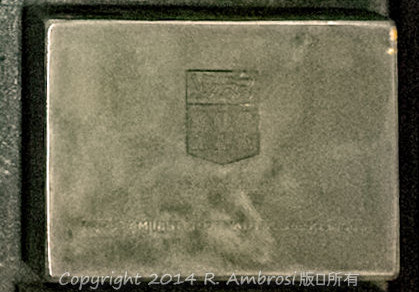
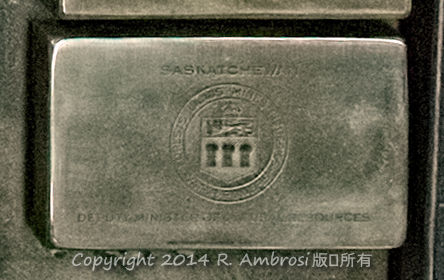
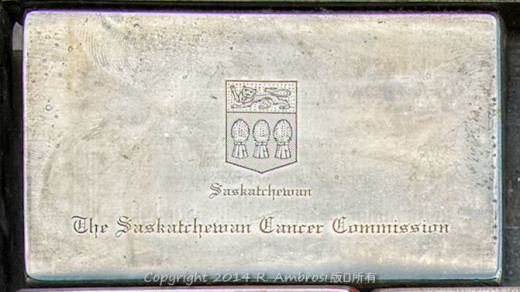
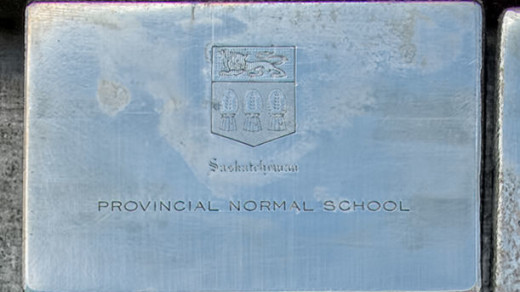
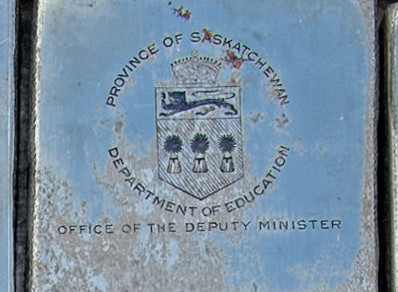
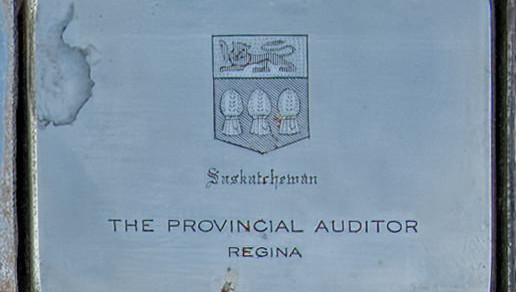
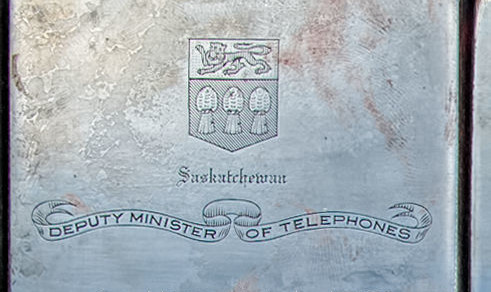
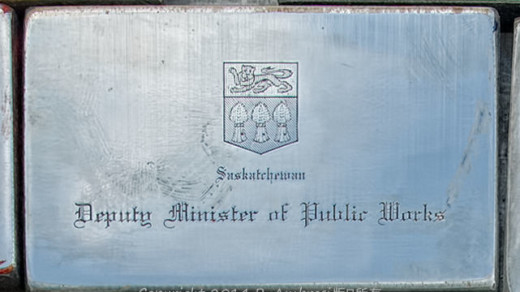
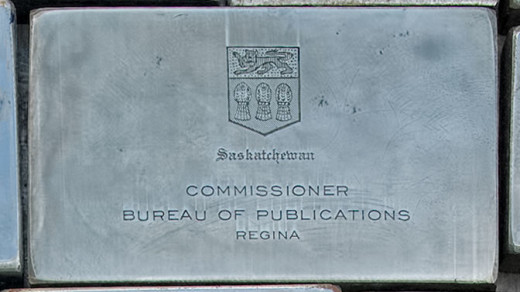
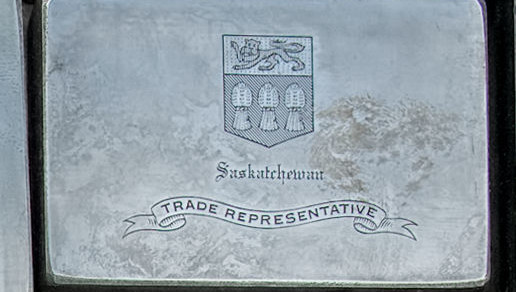
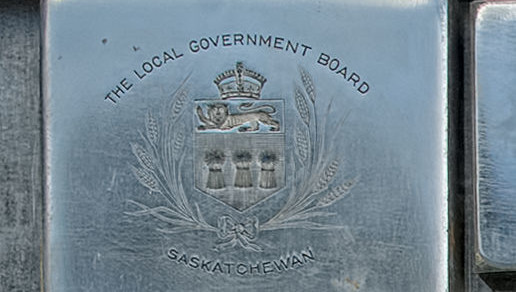
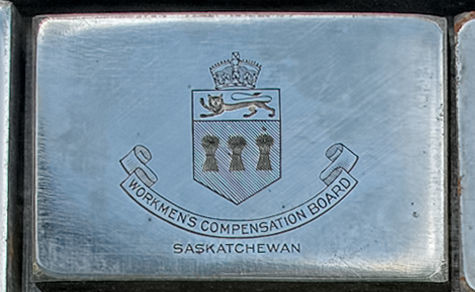
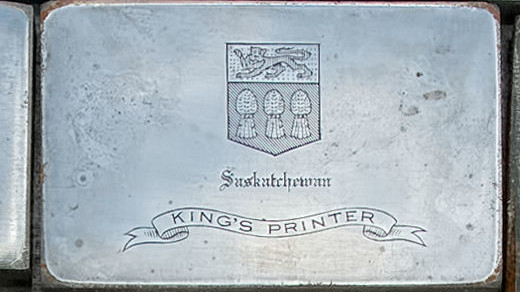
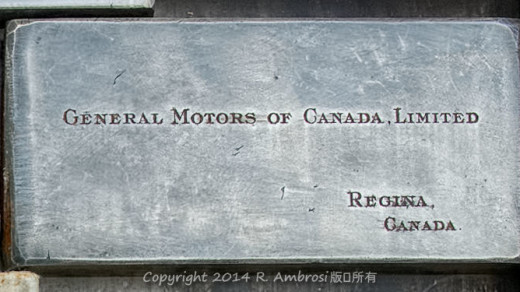
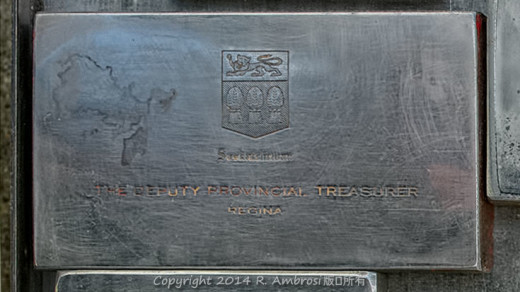
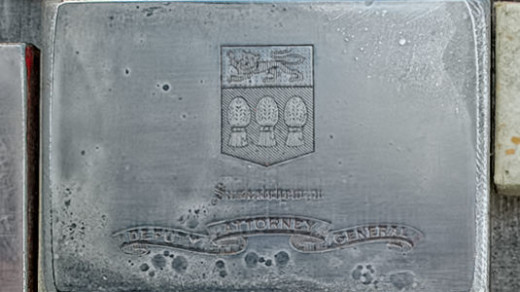
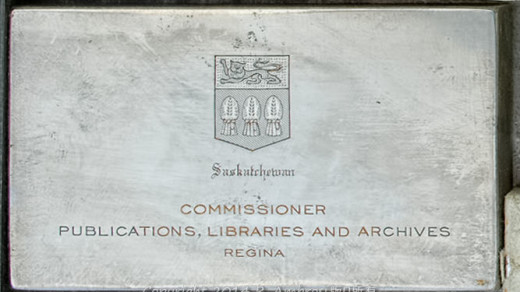
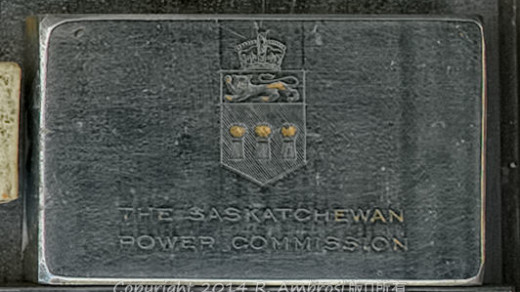
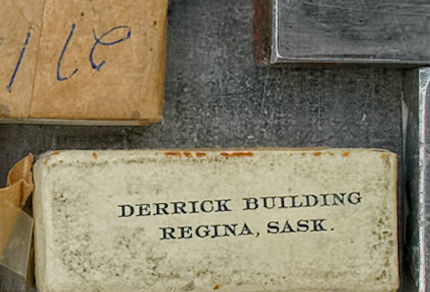
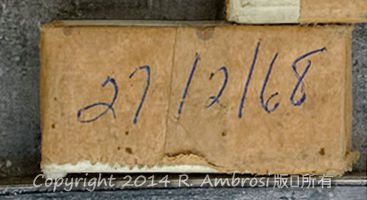
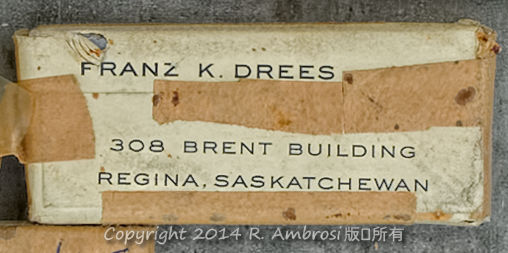

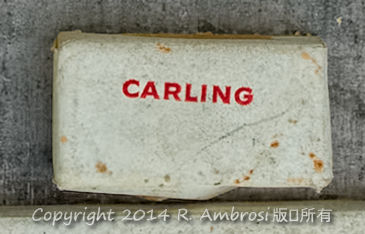
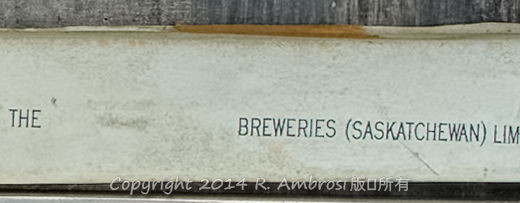
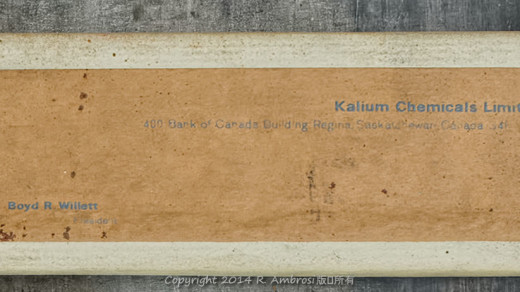
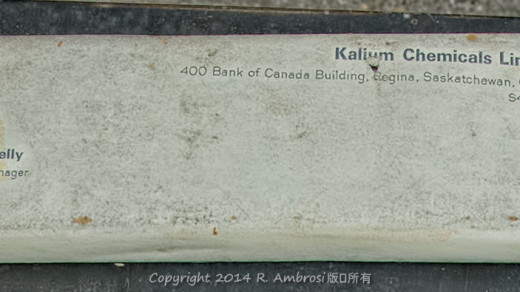
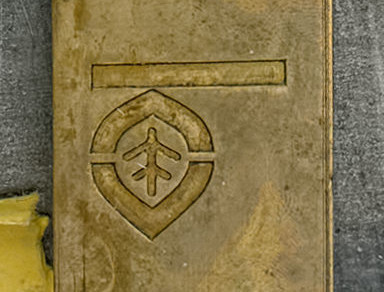
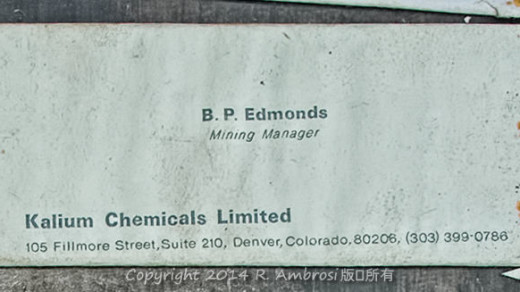
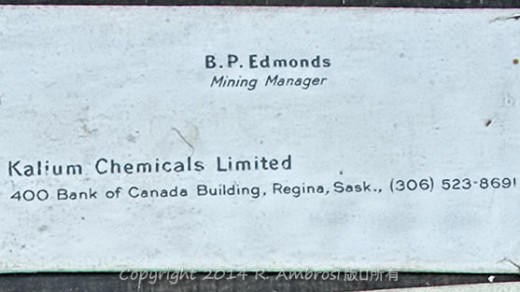
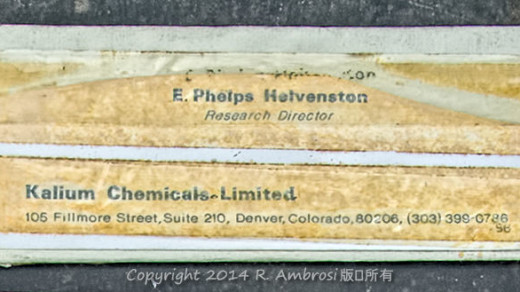
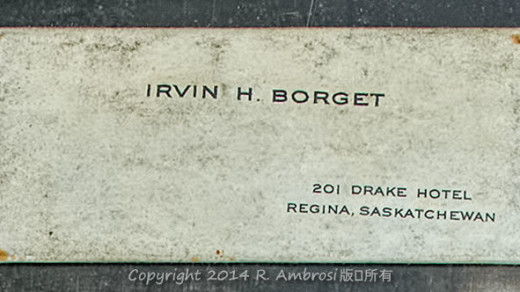
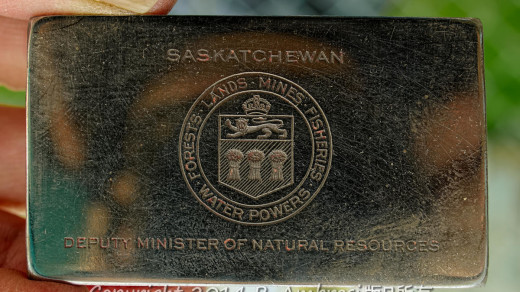
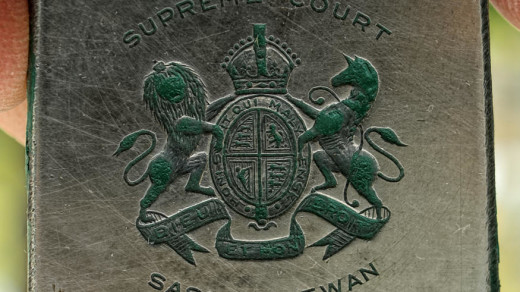
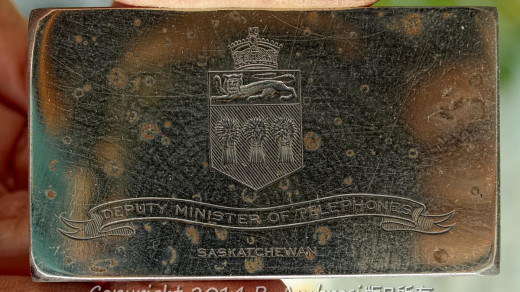
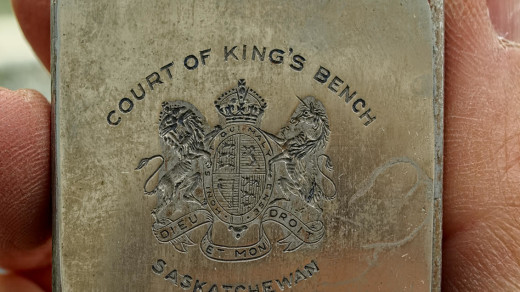
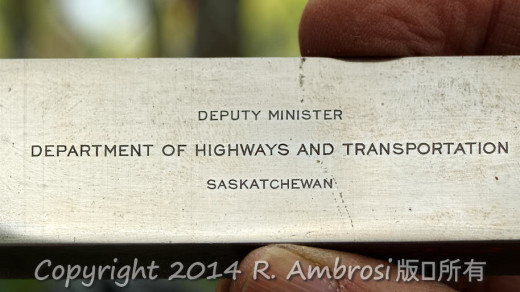
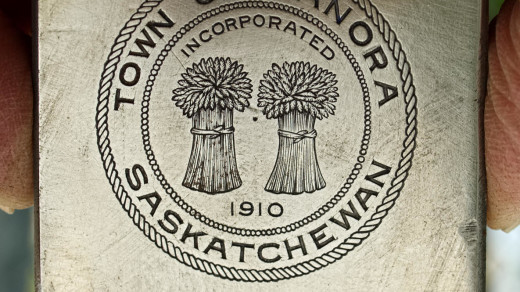
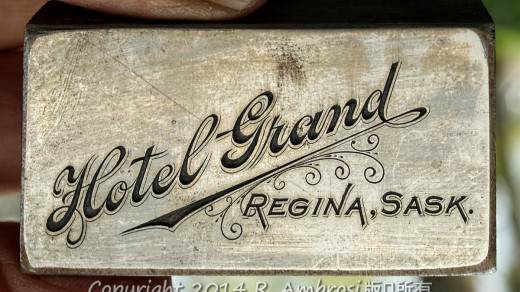
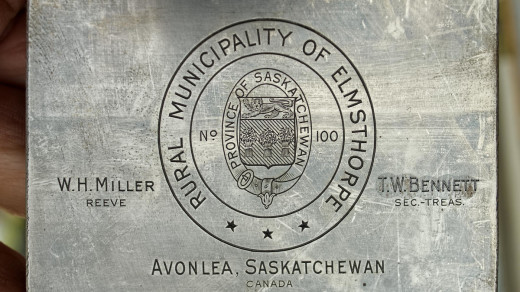
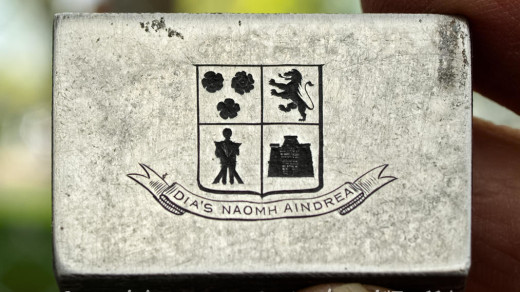
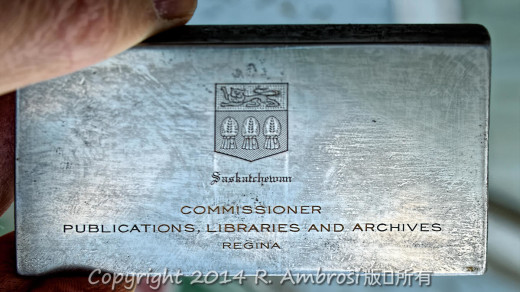
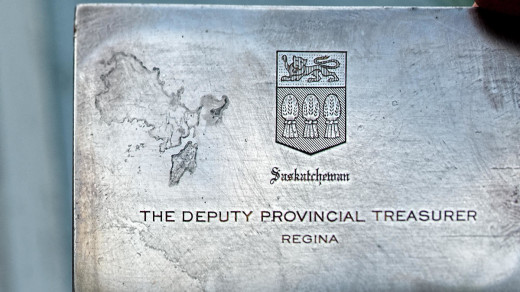
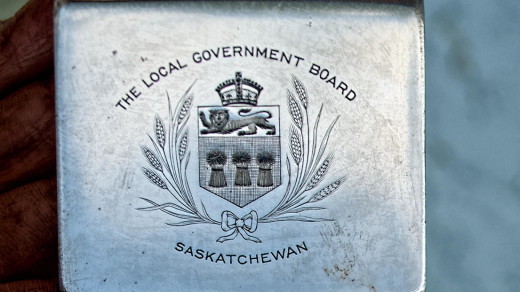
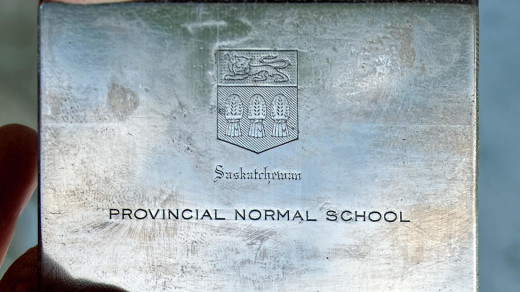
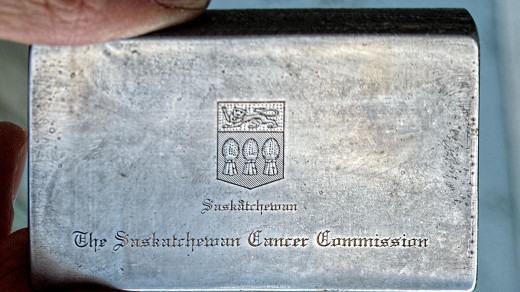
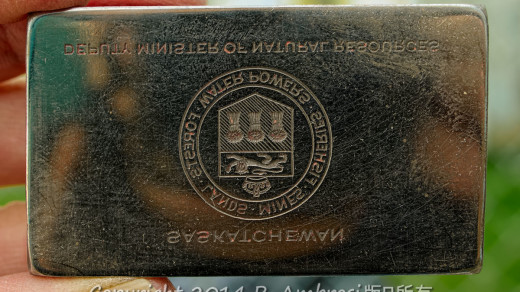
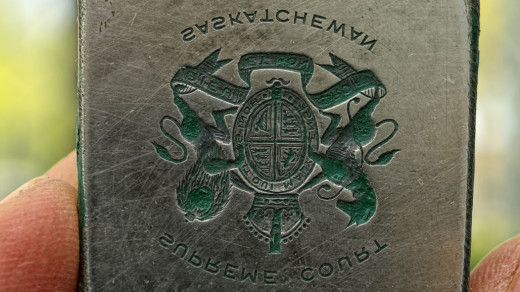
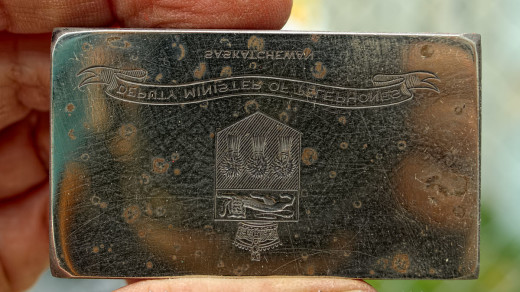
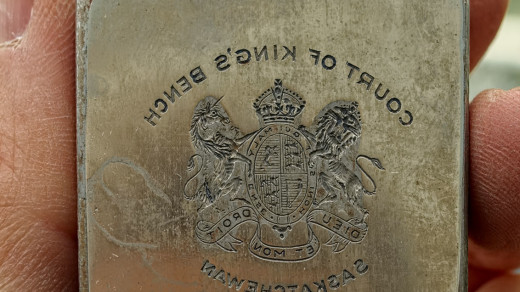
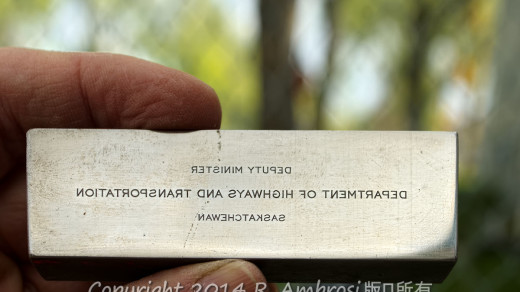
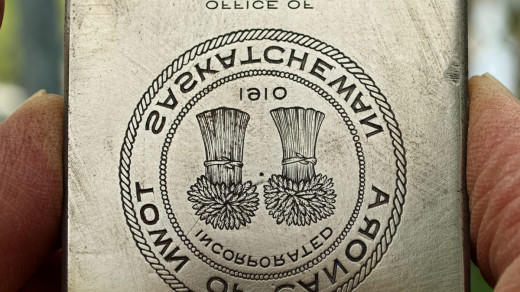
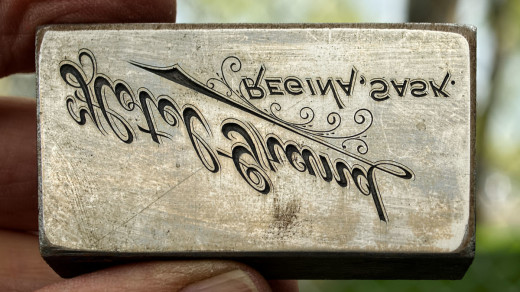
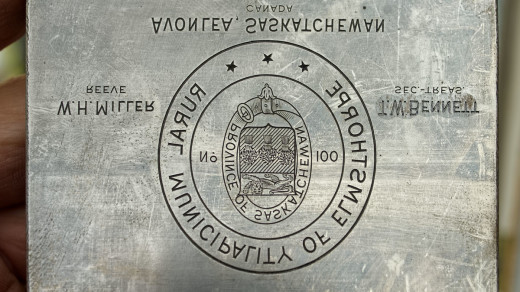
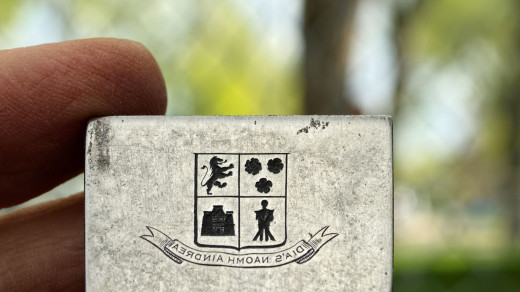
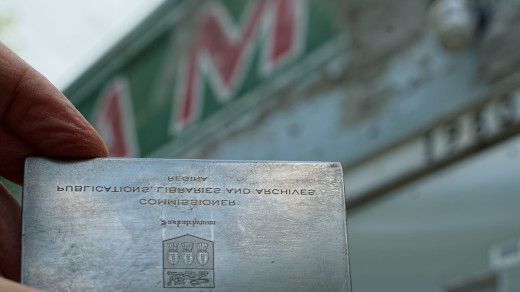
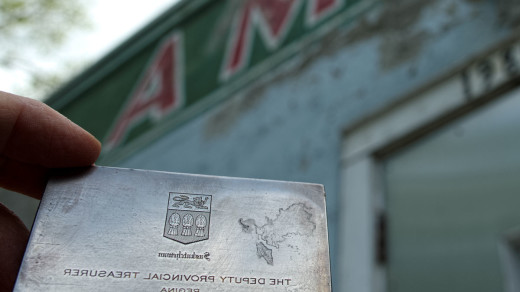
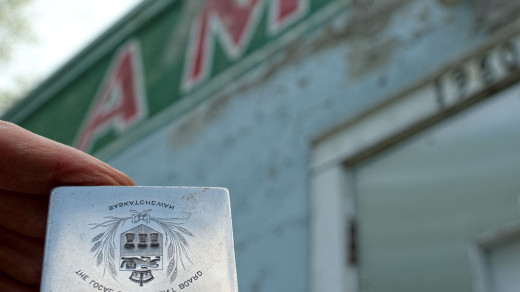
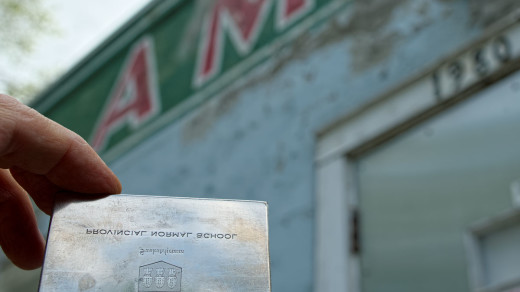
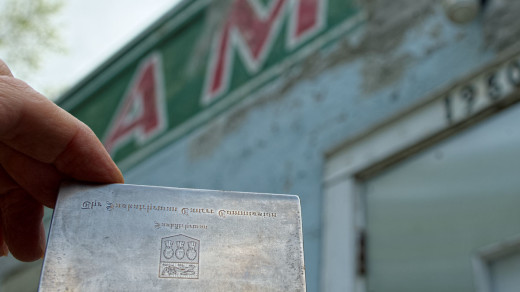

You must be logged in to post a comment.